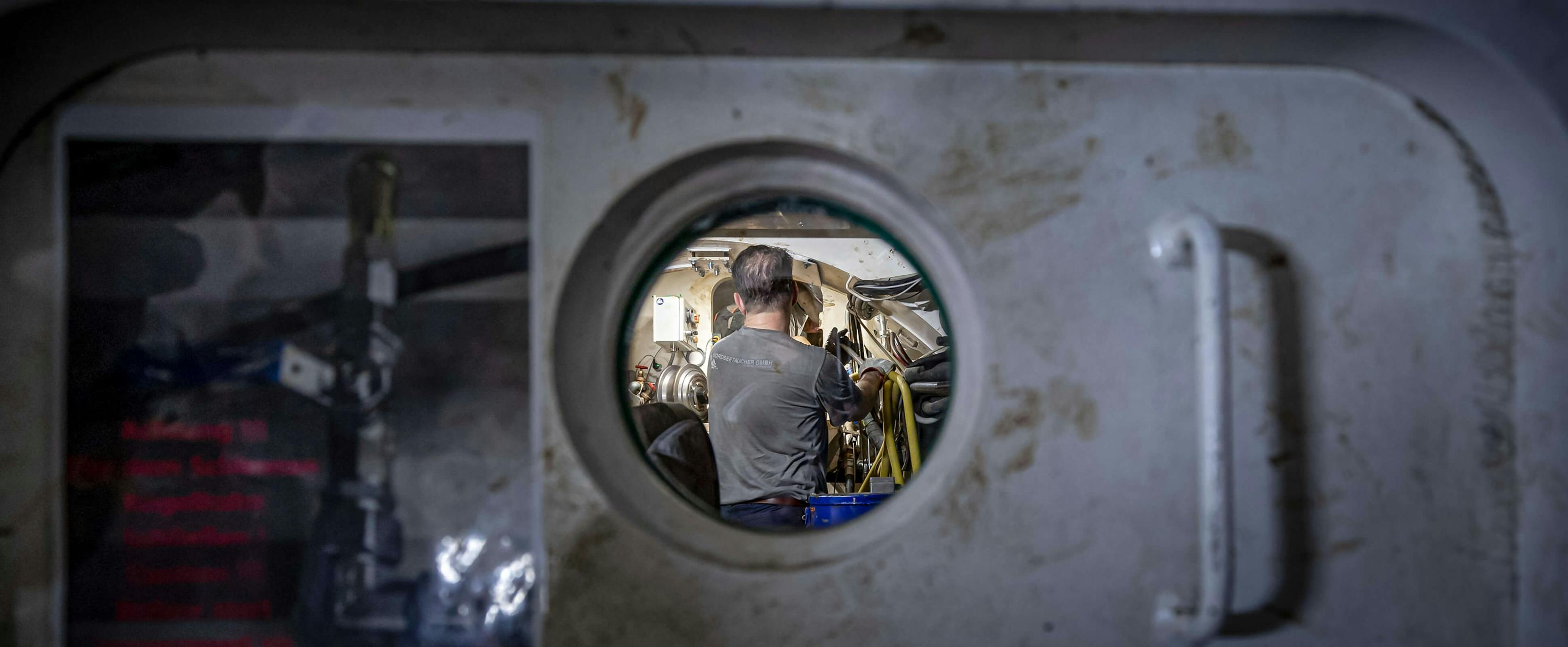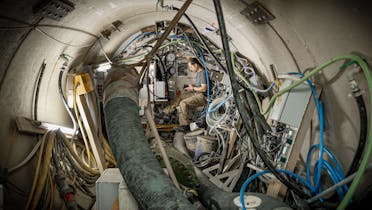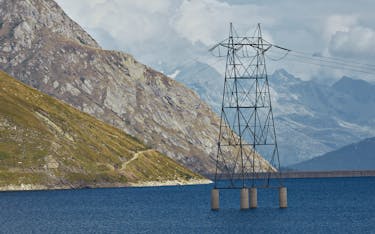Grid project Connection Nant de Drance

What do professional divers have to do with the construction of an extra-high-voltage link? To find out, you first need to know that the mini-tunneller, Giorgia, is currently drilling out the gallery to house the extra-high-voltage link between the substation at La Bâtiaz and Le Verney in Martigny. Some of the drill head attachments are worn out during drilling and need to be replaced while work is underway. That's easier said than done when the drill head of the machine is operating at a depth of 12 to 20 metres below ground level, where the water table is spread across different layers.
Accessing the rear of the mini-tunneller is easy enough: you just need to follow the section of the gallery that has been already drilled and reinforced with concrete tubes as drilling proceeds. However, accessing the drill head at the front of the mini-tunneller is a different story. In simple terms, Giorgia is composed of two distinct elements. The first, main section is in the form of a tube, 8 metres long and 67 tons in weight, with a 13-ton drill head at the front. The main section is divided into four distinct chambers, positioned one after the other, which are accessible via hatches: a compression/decompression chamber, a working chamber, a pressure chamber and an excavation chamber. The latter two chambers stay pressurised during excavation, which prevents ground water from seeping in, and stabilises the ground around the mini-tunneller's head. The pressure in the tunnel behind the mini-tunneller is different from the pressure in front of the drill head. To move from the back to the front of the mini-tunneller, the compression and decompression stages must be taken into account, as they would at sea when divers return from the depths to the surface.
Because the dangers are greater, the procedures the divers had to follow in Martigny were more extreme than out on the open sea.
Operational time line
From 27 April to 2 May 2021, a team of two divers and a hyperbaric operator worked on replacing some of the cutting wheels, scrapers and blades on the drill head, following a tried and tested procedure. After a morning of preparation, which included, among other tasks, stowing the equipment needed in the work chamber of the mini-tunneller, the two divers slipped into the compression/decompression chamber and closed the first access hatch behind them. This was all carried out under the supervision of the hyperbaric operator, who controls each step of the process from the outside. To begin with, the pressure in this first chamber is equalised, which takes a few minutes. Then the divers pass through a second hatch to access the working chamber, before entering the pressure chamber via a third hatch. Only one of the divers passes through the final, very narrow hatch leading to the excavation chamber, situated just behind the drill head.
Equipped with diving boots and lights, the diver works in the wet, muddy, dark environment of the excavation chamber, where the temperature is 10 degrees and there is only 40 cm of space separating the pressure chamber from the drill head. For safety reasons, no more than six hours can elapse between the divers entering the compression/decompression chamber and the time they leave, with decompression stages of about 60 minutes before exiting the mini-tunneller. Each day, the team had to spend the whole morning preparing in order to carry out five hours of work on the mini-tunneller's drill head, followed by an additional hour for the decompression stages.
More complicated than out at sea
Because the dangers are greater, the procedures the divers had to follow in Martigny were more extreme than out on the open sea. The divers are all experienced and specialists in this type of work. However, there is no such thing as a zero-risk operation, so an emergency hyperbaric chamber was set up in the Le Verney town square. The Swiss National Accident Insurance Fund (SNAIF) was informed of the work beforehand, as was the Swiss Air-Rescue Association (REGA), which had an aircraft on standby to transport any injured persons to the Geneva University Hospitals (HUG), where another decompression chamber was ready and waiting. The good news is that everything went very well.
During those five days' work in late April to early May, five 55-kilo cutting wheels, eight scrapers and three blades were replaced. These drill head components are used to break and crush the material making up the sub-soil so that it can pass through an 8-centimetre opening and be taken up to the surface via pipes, where it is recycled on the Le Verney construction site.
The work carried out in late April was the second operation of this kind to take place. A third is planned before the tunnel is drilled underneath the Swiss Federal Railways (SBB) tracks. A fourth set of works might be needed if some of the drill head components experience too much wear.
Giorgia, the mini-tunneller, should reach the La Bâtiaz substation during the summer of 2021. The tunnel will then have to be fitted out, the cables pulled through and the exit gantry erected in Le Verney, where the underground cables will be connected to the Chamoson – Romanel EHV overhead line. The third and final tranche of the extra-high-voltage line, which connects the Nant de Drance pumped storage power plant to the electricity network, is planned for 2022.












